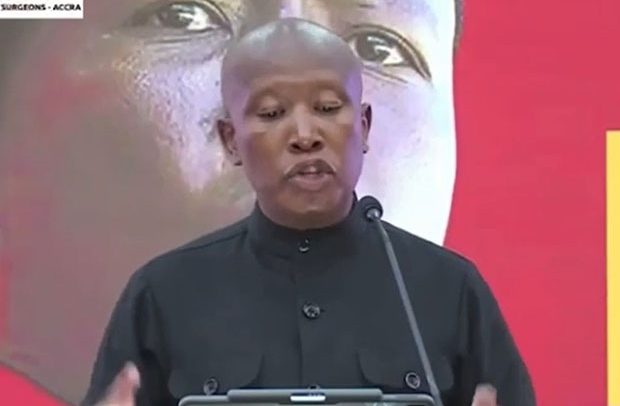
For two weeks, Tsholofelo Moloi has been among thousands of South Africans lining up for water as the country’s largest city, Johannesburg, confronts an unprecedented collapse of its water system affecting millions of people.
Residents rich and poor have never seen a shortage of this severity. While hot weather has shrunk reservoirs, crumbling infrastructure after decades of neglect is also largely to blame. The public’s frustration is a danger sign for the ruling African National Congress, whose comfortable hold on power since the end of apartheid in the 1990s faces its most serious challenge in an election in May.
A country already famous for its hours-long electricity shortages is now adopting a term called “water-shedding” — the practice of going without water, from the term load-shedding, or the practice of going without power.
Moloi, a resident of Soweto on the outskirts of Johannesburg, isn’t sure she or her neighbours can take much more.
They and others across South Africa’s economic hub of about 6 million people line up day after day for the arrival of municipal tanker trucks delivering water. Before the trucks finally arrived the day before, a desperate Moloi had to request water from a nearby restaurant.
There was no other alternative. A five-litre (1.3-gallon) bottle of water sells for 25 rand ($1.30), an expensive exercise for most people in a country where over 32% of the population is unemployed.
“We are really struggling,” Moloi said. “We need to cook, and children must also attend school. We need water to wash their clothes. It’s very stressful.”
Residents of Johannesburg and surrounding areas are long used to seeing water shortages — just not across the whole region at once.
Over the weekend, water management authorities in Gauteng province, which includes Johannesburg and the capital, Pretoria, told officials from both cities that the failure to reduce water consumption could result in a total collapse of the water system. That means reservoirs would drop below 10% capacity and would need to be shut down for replenishment.
That could mean weeks without water from taps — at a time when the hot weather is keeping demand for water high. The arrival of chilly winter in the Southern Hemisphere is still weeks away.
No drought has been officially declared, but officials are pleading with residents to conserve what water they can find. World Water Day on Friday is another reminder of the wider need to conserve.
Outraged activists and residents call this a crisis years in the making. They blame officials’ poor management and the failure to maintain ageing water infrastructure. Much of it dates to the years just after the end of apartheid, when basic services were expanded to the country’s Black population in an era of optimism.
The ANC long rode on that enthusiasm, but now many South Africans are asking what happened. In Johannesburg, run by a coalition of political parties, anger is against authorities in general as people wonder how the maintenance of some of the country’s most important economic engines went astray.
A report published last year by the national department of water and sanitation is damning. Its monitoring of water usage by municipalities found that 40% of Johannesburg’s water is wasted through leaks, which include burst pipes.
In recent days, even residents of Johannesburg’s more affluent and swimming pool-dotted suburbs have found themselves relying on the arrival of municipal water tankers, which came as a shock to some.
Residents in one neighbourhood, Blairgowrie, came out to protest after lacking water for nearly two weeks.
A local councillor in Soweto, Lefa Molise, told The Associated Press he was not optimistic that the water shortage would be resolved soon.
Water cuts have become so frequent that he urges residents to reserve any supply they can find, especially when he said authorities give little or no warning about upcoming shortages.
The water tankers are not enough to keep residents supplied, he added.
An older resident, Thabisile Mchunu, said her taps have been dry since last week. She now hauls what water she can find in 20-litre buckets.
“The sad thing is that we don’t know when our taps are going to be wet again,” she said.
Rand Water, the government entity that supplies water to more than a dozen municipalities in Gauteng province, this week pleaded with residents to reduce their consumption. The interlinked reservoirs supplying its system are now at 30% capacity, and high demand on any of them affects them all.
Even South Africa’s notoriously troubled electricity system has played a role in the water problem, at least in part.
On Tuesday, Johannesburg Mayor Kabelo Gwamanda said a power station that supplies electricity to one of the city’s major water pumping stations had been struck by lightning, causing the station to fail.
————–
Explore the world of impactful news with CitiNewsroom on WhatsApp!
Click on the link to join the Citi Newsroom channel for curated, meaningful stories tailored just for YOU: https://whatsapp.com/channel/0029VaCYzPRAYlUPudDDe53x
No spams, just the stories that truly matter! 
The post South Africa’s largest city battles unprecedented water crisis appeared first on Citinewsroom - Comprehensive News in Ghana.
Read Full Story
























Facebook
Twitter
Pinterest
Instagram
Google+
YouTube
LinkedIn
RSS